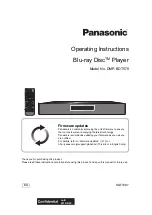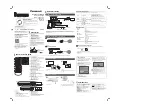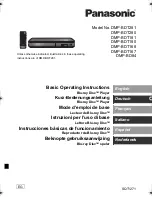
Connections and Setup
chapter 1
9
STOP
SKIP
PLAY
PAUSE
OPEN/
CLOSE
STANDBY/
ON
D V D / V I D E O C D / C D P L AY E R / P R O G R E S S I V E S C A N D E C O D E R
D R C 4 8 0
S-
L
R
L
R
STEREO
AUDIO
OUT
TV
VIDEO
OUT
Audio/Video Jacks and Cables (RCA-type)
Stereo Audio Out
These jacks send the audio from the disc you’re playing in the DVD Player
to the TV. The audio jacks and cables are often color-coded (red for right
audio, and white for left audio). You must connect audio cables to the
AUDIO L and R jacks on the DVD Player and the corresponding Audio Input
Jacks on the TV no matter which Video jack you connect (TV VIDEO OUT; S-
VIDEO; Y, Pb, Pr)
Note: If your component has only one input for audio (mono), connect it to the left
(white L/Mono) audio jack on the TV and don’t connect the right audio part of the
cable.
TV Video Out
The basic Video jack (usually color-coded yellow) is also referred to as
composite video. Composite video is better than the video quality you get
from an RF coaxial cable (the type used to plug the cable feed into a TV).
STANDBY/ON – Turns the player on and off. The ON•OFF indicator lights when the player is
off.
OPEN/CLOSE – Press to open and close the disc tray.
PLAY – Press to begin playback.
PAUSE – During playback, press to pause.
PREV – Skips to previous chapter or track.
STOP – Stops disc play.
– Skips to next chapter or track.
– Skips to next chapter or track.
– Skips to previous chapter or track.
S-Video Jacks and Cables
The S-Video (separate video) jack provides better picture quality than a
composite video. If your TV has an S-VIDEO jack, connect the DVD Player to
the TV with an S-Video cable (not provided).
Note: Remember to connect the left and right audio cables because the S-Video cable
carries only the picture signal, not the sound.
Front of the DVD Player












































